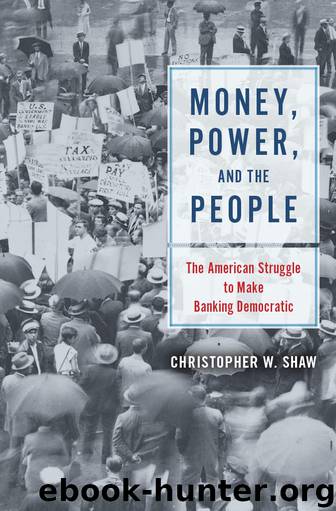Money, Power, and the People by Christopher W. Shaw

Author:Christopher W. Shaw [Shaw, Christopher W.]
Language: eng
Format: epub
ISBN: 9780226636337
Publisher: University of Chicago Press
Published: 2019-09-05T04:00:00+00:00
“Cooperation and Not Conflict”
The inclusion of agriculture and labor in New Deal policymaking imparted these groups with stature. “Labor has improved its status tremendously,” Perkins observed. This new standing also created the expectation that organized labor would serve as a cooperative partner of government. “Organized labor’s responsibilities today are greater than they ever have been in the entire history of Unionism,” mayor of Buffalo George J. Zimmerman (D) instructed. “The eyes of the nation are upon labor at this time and . . . labor must play a dignified, harmonious part.” This role was one that unions largely embraced. “Organized labor owes a responsibility to itself and to our government today that we never owed before,” stated Van A. Bittner of the United Mine Workers of America. “We have a place in the counsels of our government.”8
The ascendancy of farmer organizations was less marked—because through the farm bloc agriculture had attained a notable degree of influence in the early 1920s—but similarly consequential. J. Marvin Jones, chairman of the House Committee on Agriculture, reported that “when Albert Goss [Grange] and Ed O’Neal [Farm Bureau] wanted hearings, they got hearings on any bill of importance that affected the farmers, because they represented a great number of farmers.” The major farmer organizations—with the notable exception of the Farmers Union—reciprocated by seeking to cooperate with government policies. “All farmers,” the Indiana Farm Bureau Federation enjoined, “should be alert and ready to cooperate in the New Deal for agriculture.”9
The New Dealers strove to mediate between interest groups. In the words of Assistant Secretary of Commerce John S. Dickinson: “What this administration is trying to do is to look at our economic and social life as a process in which all have a partnership.” Roosevelt established this tone early in his first term when he referred to “a partnership between Government and farming and industry and transportation.” Opposite ends of the political spectrum represented within Roosevelt’s “brain trust” agreed with this premise. Raymond C. Moley explained that the administration “conceives of the relationship of worker and employer, debtor and creditor, State and people as a common effort to unify the people of this country.” And Rexford G. Tugwell claimed that “cooperation and not conflict is the better organizing principle.”10
The oppositional consciousness that animated banking politics clashed with the New Deal’s emphasis on partnership. Forms of politics that evoked conflict made Wallace apprehensive. He had responded to “this fighting element in the Farmers Union” by concluding that the organization was “just a little wild.” Perkins’s similar outlook on conflict was consistent with her background in social welfare reform. Social reformers sought to resolve the tensions between workers and employers. Their approach to labor questions did not focus on using worker-controlled institutions to challenge directly the power of employers. “The most important things that we do for labor,” Perkins stated, “are the mass protections that come out of law, out of legislation.” Union leaders recognized the distinction between how organized workers and social reformers addressed labor issues. Jacob S.
Download
This site does not store any files on its server. We only index and link to content provided by other sites. Please contact the content providers to delete copyright contents if any and email us, we'll remove relevant links or contents immediately.
The Secret History by Donna Tartt(18840)
The Social Justice Warrior Handbook by Lisa De Pasquale(12141)
Thirteen Reasons Why by Jay Asher(8791)
This Is How You Lose Her by Junot Diaz(6779)
Weapons of Math Destruction by Cathy O'Neil(6139)
Zero to One by Peter Thiel(5684)
Beartown by Fredrik Backman(5594)
The Myth of the Strong Leader by Archie Brown(5421)
The Fire Next Time by James Baldwin(5247)
How Democracies Die by Steven Levitsky & Daniel Ziblatt(5127)
Promise Me, Dad by Joe Biden(5087)
Stone's Rules by Roger Stone(5026)
100 Deadly Skills by Clint Emerson(4840)
A Higher Loyalty: Truth, Lies, and Leadership by James Comey(4840)
Rise and Kill First by Ronen Bergman(4701)
Secrecy World by Jake Bernstein(4640)
The David Icke Guide to the Global Conspiracy (and how to end it) by David Icke(4624)
The Farm by Tom Rob Smith(4434)
The Doomsday Machine by Daniel Ellsberg(4415)
